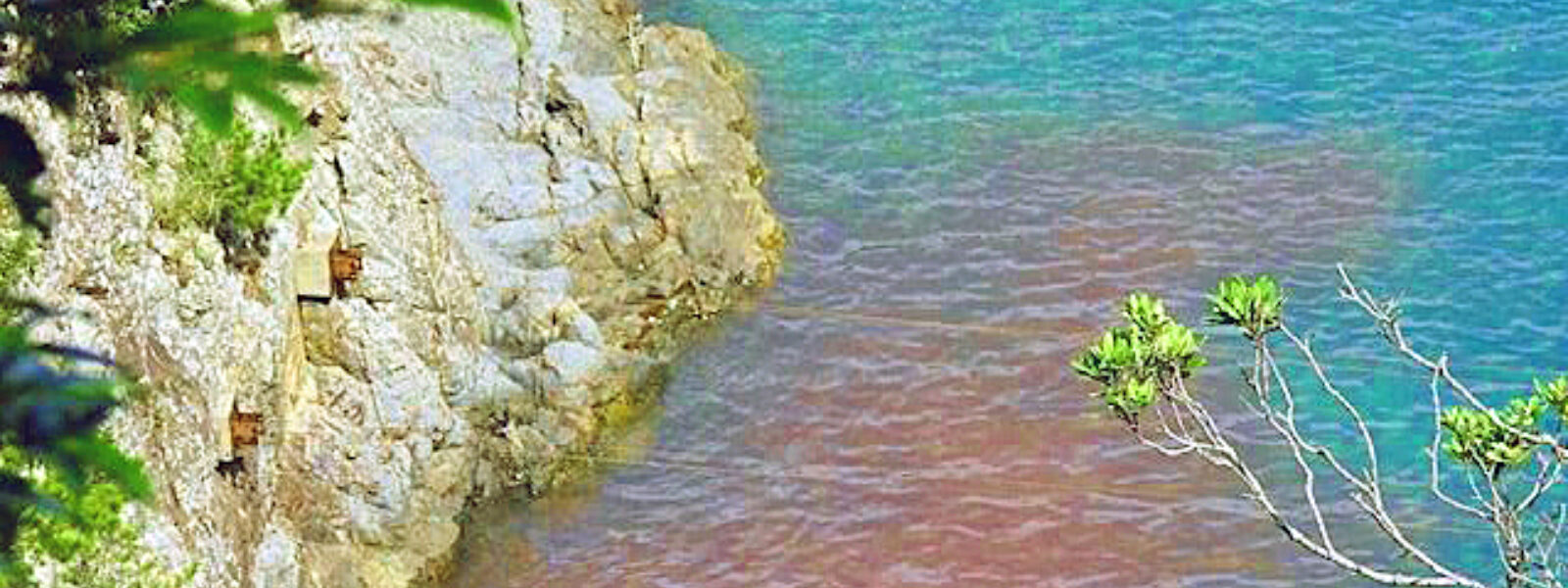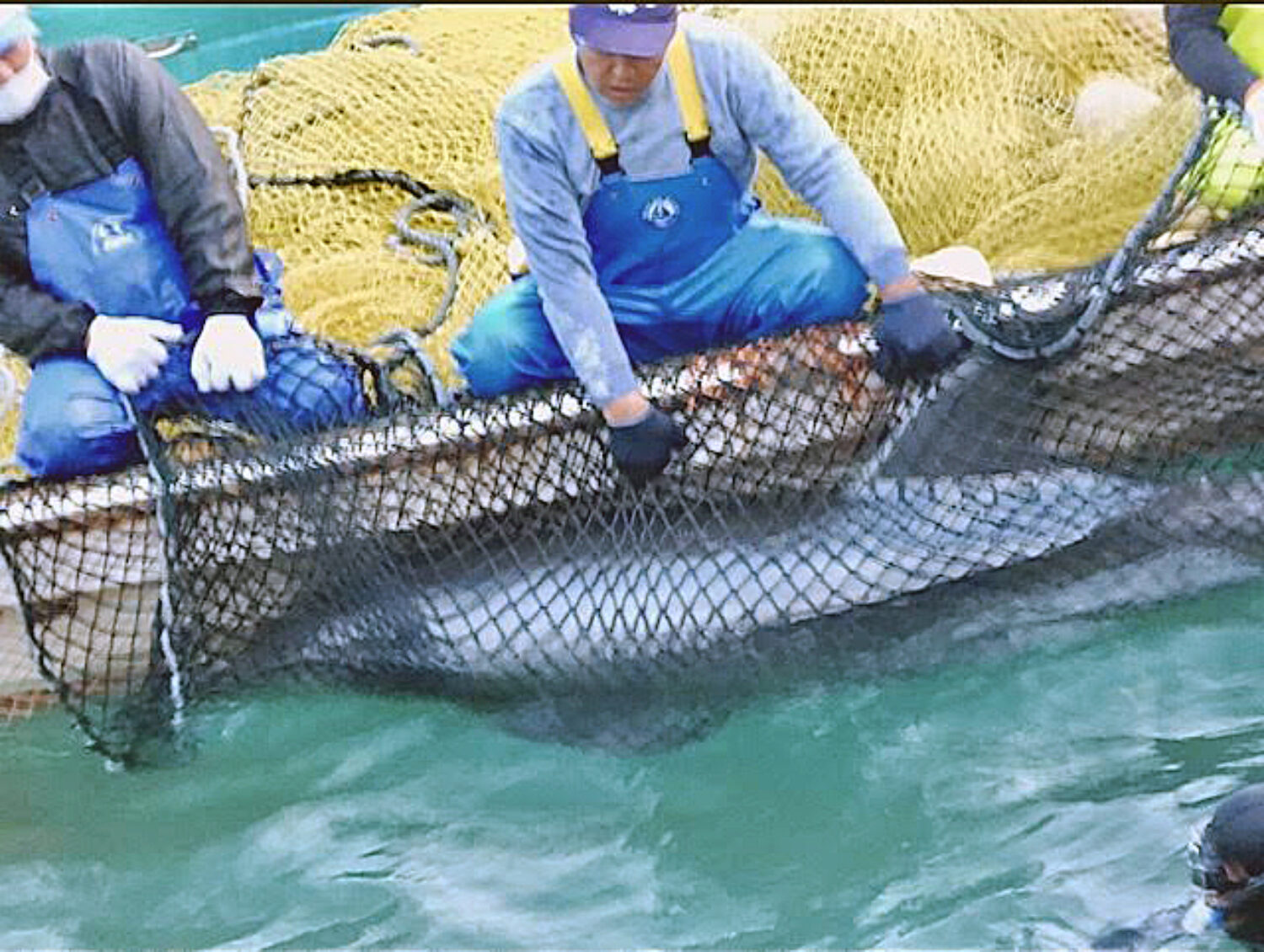
Declines of Taiji Dolphin Populations Confirmed
By Mark J. Palmer
Last May, a new paper was presented and accepted by the International Whaling Commission’s Scientific Committee written by Dr. Toshio Kasuya, retired Japanese whale biologist, and Dr. Robert Brownell, US National Marine Fisheries Service. Titled “Taiji dolphin drive fishery and status of the exploited populations,” the study reveals that several populations of dolphins caught off the coast of Taiji are showing concerning signs of depletion.
Many of us protesting the dolphin drive hunts in Taiji have raised the issue of depletion of the dolphin herds by the indiscriminate slaughter. Every 6-month-long season of the hunt, hundreds of wild dolphins are herded into the notorious Cove, where most of the pods are slaughtered for meat, and a few are taken alive for sale to aquariums in Japan and China.
The dolphin drive hunts, as depicted in the Oscar-winning documentary, The Cove, are cruel beyond measure, killing sentient beings for consumption by humans and pets. Testing of the dolphin meat has shown high levels of mercury and PCBs, exceeding Japan’s own health standards for consumers.
Sadly, the Japanese government has repeatedly treated the hunts like it treated international whaling – allowing for the killing of females and young, not just adult males. The government quotas are useless because the hunters can’t find enough of some dolphin species to fill quotas. Research studies on the status of Japanese dolphin populations are few and far between.
Kasuya and Brownell analyzed the death records of killed dolphins, which were compiled by the Japanese government. They showed that over time the catches of several dolphin species in the Taiji hunts are diminishing, classic indications of decline of the overall population.
Instead of the government adding further restrictions, quotas remain high even for depleted species, while other species, apparently not as prized for meat as the depleted species, are being added to the allowable captures. This only increases pressure on the few remaining animals in depleted populations.
“Unfortunately, the decline in the numbers of small cetaceans hunted off Taiji is following the same pattern as has been seen in commercial whaling with the most valuable species depleted first, followed by less desirable species,” according to the authors.
As long as the dolphin hunters are out seeking dolphins without protecting depleted species, the declines will continue.

A bottlenose dolphin was recently captured in Taiji, Japan. It will face a lifetime in a small concrete tank. Photo Copyright: Kunito Seko
A good example cited in the paper is the short-finned pilot whale (Globicephala macrorhynchus). The population for this species from 1983-1991 was estimated to number around 14,000. More than 8,000 pilot whales have been killed or captured for captivity at Taiji, clearly a major source of depletion. Yet, during the same period, the catch ranged between 33% to 59% of the official quota, showing that the quotas were and are too generous to provide any protection to the species.
“We are concerned because this means the hunt had no restriction in the number of whales killed,” according to the report. “Therefore, the quotas must be drastically reduced to stop further decline of the population.”
The bottlenose dolphin (Tursiops truncates) is especially valuable as the species most requested for captivity. The Taiji dolphin hunters receive far more money for a trained live dolphin than a dead dolphin for the meat market. The catch of this species ranged from 34% to 67% of the official quotas from 1995 to 2019, suggesting the species is becoming rarer along the coast.
Of spotted dolphins (Stenella attenuata), from 2015 to 2019, only 6% of the quota was captured and killed. Clearly, this species should be protected from any further captures if the population off the West Coast of Japan is to survive.
Another prized species, the large Rizzo’s dolphin (Grampus griseus), has been hunted extensively. From 2000 to 2014, catches were near the levels of the quotas. But more recently, from 2015-2019, the catch dropped to 78% of the quotas, suggesting the species has also started declining off the coast.
Kasuya and Brownell conclude that the declines need to be addressed with a more precautionary approach to hunting the dolphin populations.
There is another possible explanation for some of the declines in captures of certain species. Beginning with the International Marine Mammal Project’s (IMMP) Save Japan Dolphins Campaign in 2004, there was a reduction in dolphins caught due to concerns, raised by our education program in Taiji, about mercury contamination of dolphin meat. As a result, some Taiji consumers stopped buying dolphin meat, and subsequently, Taiji hunters told us that they cut back captures. Dolphin deaths overall have dropped by about 60%. In fact, some predicted the end of the hunts shortly after The Cove documentary came out in 2009.
What saved the hunters at that time was the huge growth in aquariums in China, all of them looking for trained dolphins to perform in their shows. By catching the lucrative wild dolphins for a life of misery in small concrete tanks, especially the bottlenose dolphin species, the hunters made more money than ever.
But the decline in dolphin populations and the mercury contamination issues still remain, along with the raw cruelty of the bloody hunts.
Special thanks to Dr. Toshio Kasuya and Dr. Robert Brownell for their illuminating research. May it help protect the health and survival of dolphin species along Japan’s coast.
Also thank you to Kunito Seko, who is filming the dolphin hunts virtually every day during the season. We are using his photos with his permission.
It is long past time for these hunts to end!
WHAT YOU CAN DO:
Sign our petition, and check back here regularly for updates.
************************************
